PSAI Weather is a powerful tool that combines up-to-date storm data with AI-informed homeowner audiences—giving you a targeted marketing engine unlike any other. While storm campaigns can be easily launched in a matter of clicks, we do recommend a few best practices to help you see the highest engagement and results. Just follow the tips below!
1. Choose the Right Storm
PSAI storm data goes back over 10 years, but more recent storms are much more effective at engaging potential customers. We recommend targeting storms that occurred within the last 30 days, as older storms often struggle to get traction on Facebook.
As you launch your storm campaign, you can browse the recent storm list or use the date filter to narrow in on a specific range!
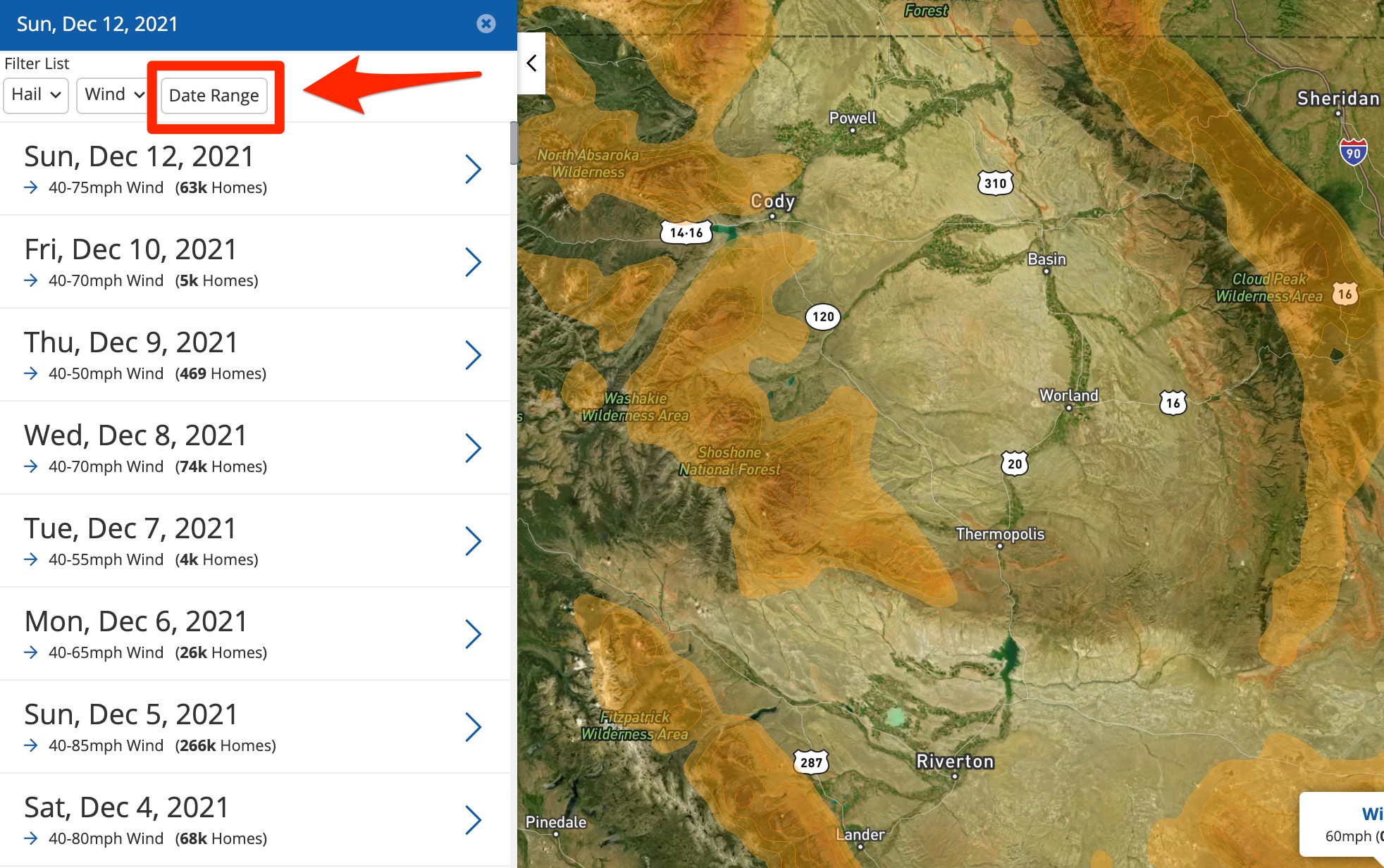
If you decide to target an older storm, make sure that the hail size is large enough to draw homeowners' attention.
2. Refine Your Target Audience
To maximize high-quality audience reach, it's important to define your audience. You'll want to target only the level of storm damage that fits your customer profile, whether that's 1" or 2"+.
Use the weather map's convenient filters to target areas based on hail or wind.
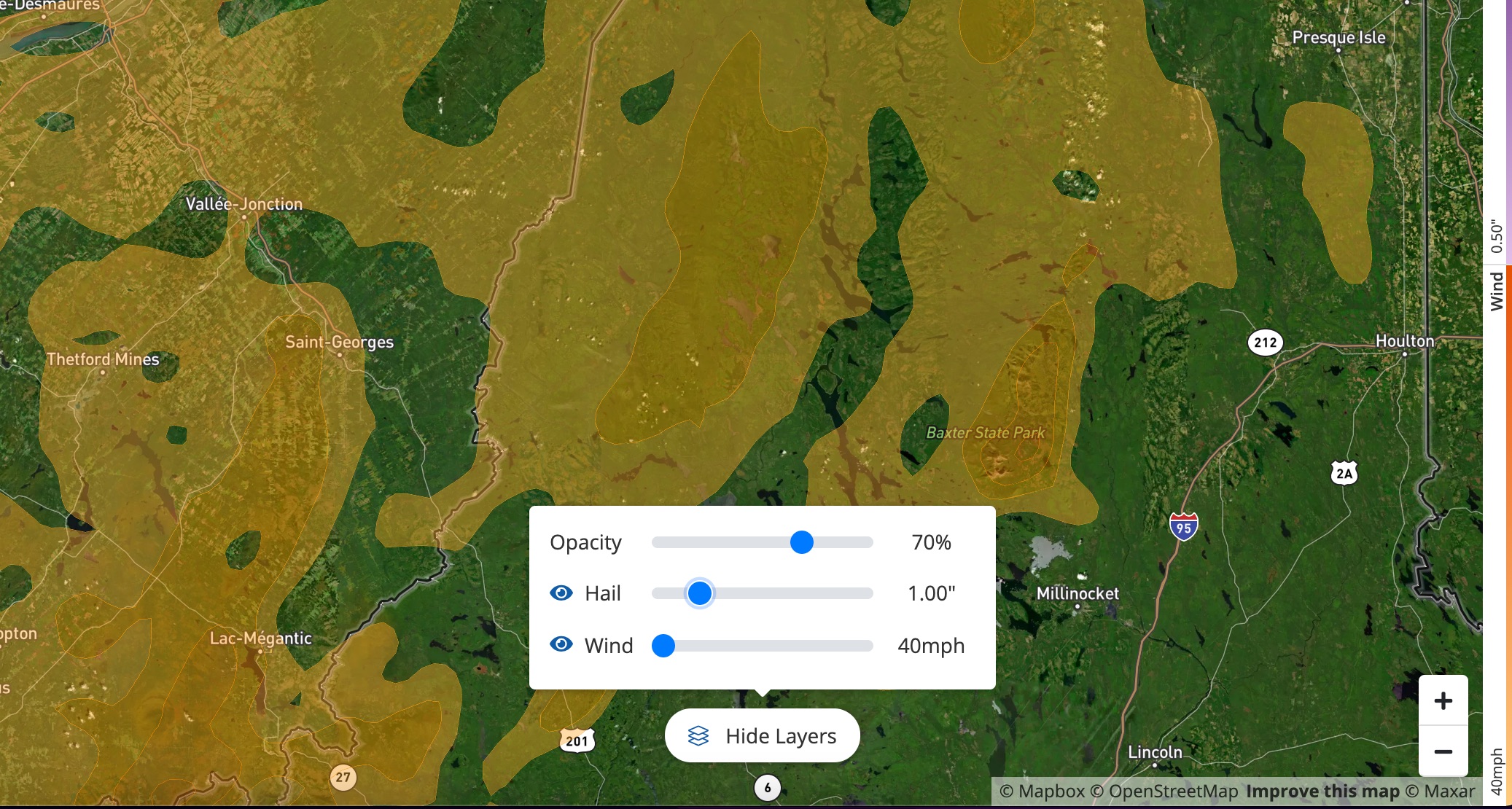
We recommend targeting areas hit by a minimum 1" hail size and then supplementing that core area around the edges.
3. Draw Multiple Shapes on the Map
To precisely target the homeowners that you're most interested in reaching, it's best to draw multiple shapes on the weather map rather than just one.
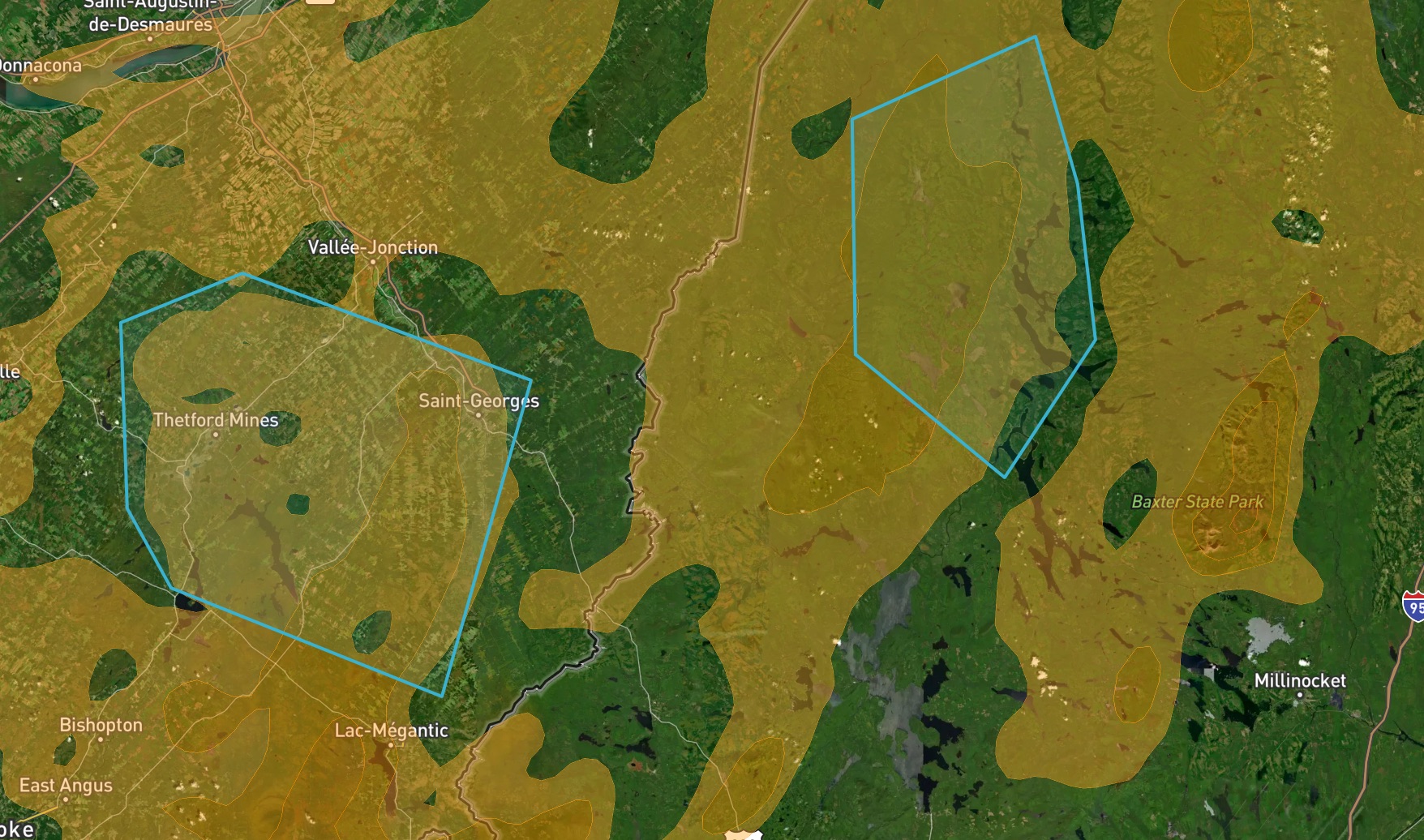
Drawing multiple polygons will help exclude low-value leads and maximize ROI. Across all of your polygons, we recommend aiming for a total homeowner audience of 1,000 to 5,000 homeowners.
Explore this tip further in this related article: Best Practices for Drawing on the Weather Map.
4. Set a Strategic Budget
One of the biggest advantages of PSAI storm campaigns is that each campaign requires a relatively small budget. We keep total marketing costs low by using our precise audience targeting technology together with the affordability of social media.
Whenever you launch your storm campaign, PSAI will recommend a suggested lifetime budget, which you can edit if you choose.
About Our Budget Strategy
PSAI leverages an auction-based bidding strategy. Since ad costs vary due to the real-time auction environment, our recommended budgets incorporate a flexible approach that takes into account the following:
- Campaign Length: Optimal durations typically range from two weeks to one month.
- Spending Limits: These help maintain a balanced presence throughout the campaign's lifecycle.
- Audience Reach: Due to the dynamic nature of social media user activity we target realistically.
- Performance: We focus on your campaigns achieving tangible results, enhancing user interactions and conversions over simply targeting impressions.
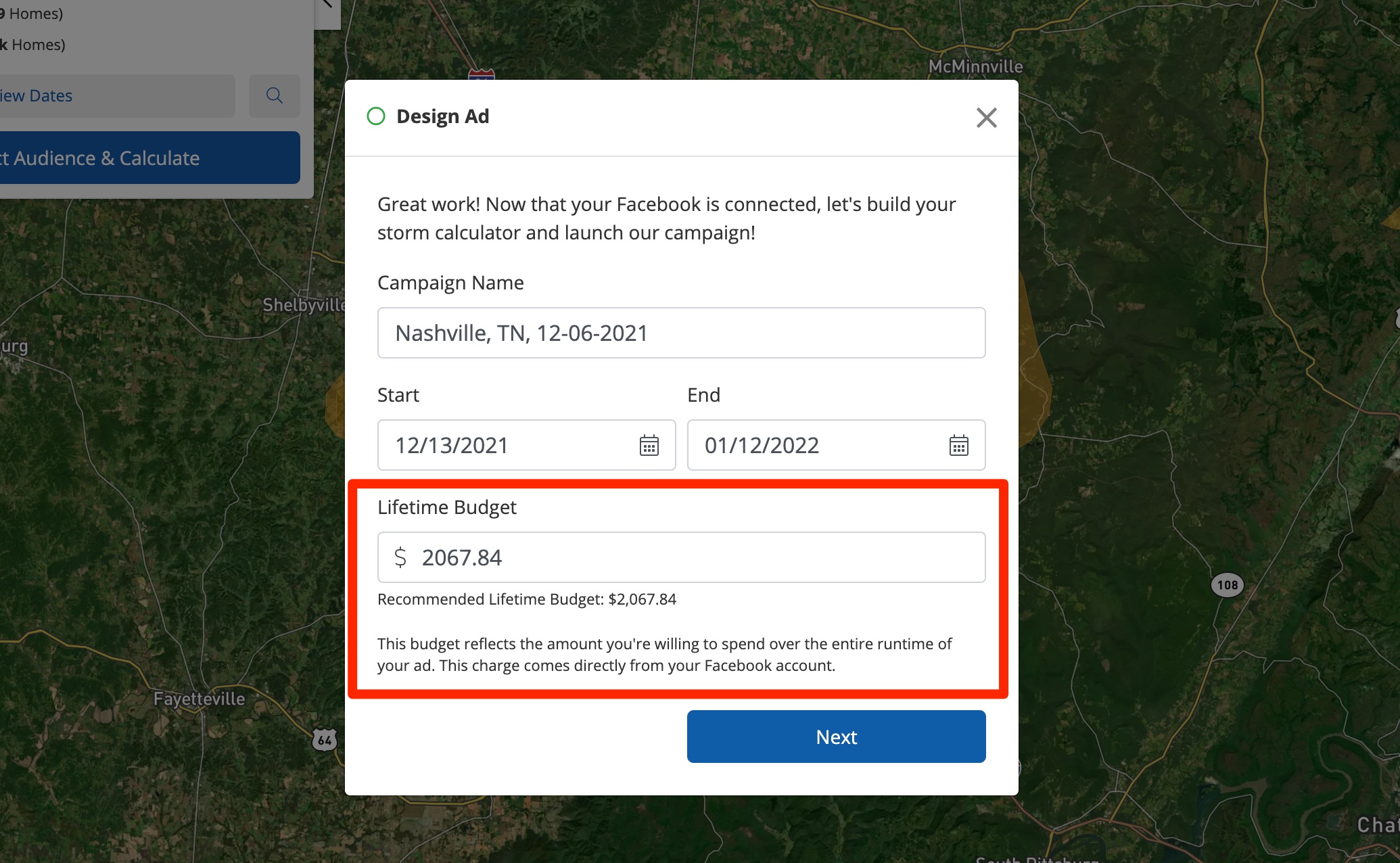
5. Set an Ideal Campaign Length
For campaign length, you'll want a long enough time period to engage your audience without overdoing it. Too-short campaigns risk being missed, while too-long campaigns risk losing urgency.
Ideally, you'll be able to get a majority of your reach within the first 2–3 weeks.
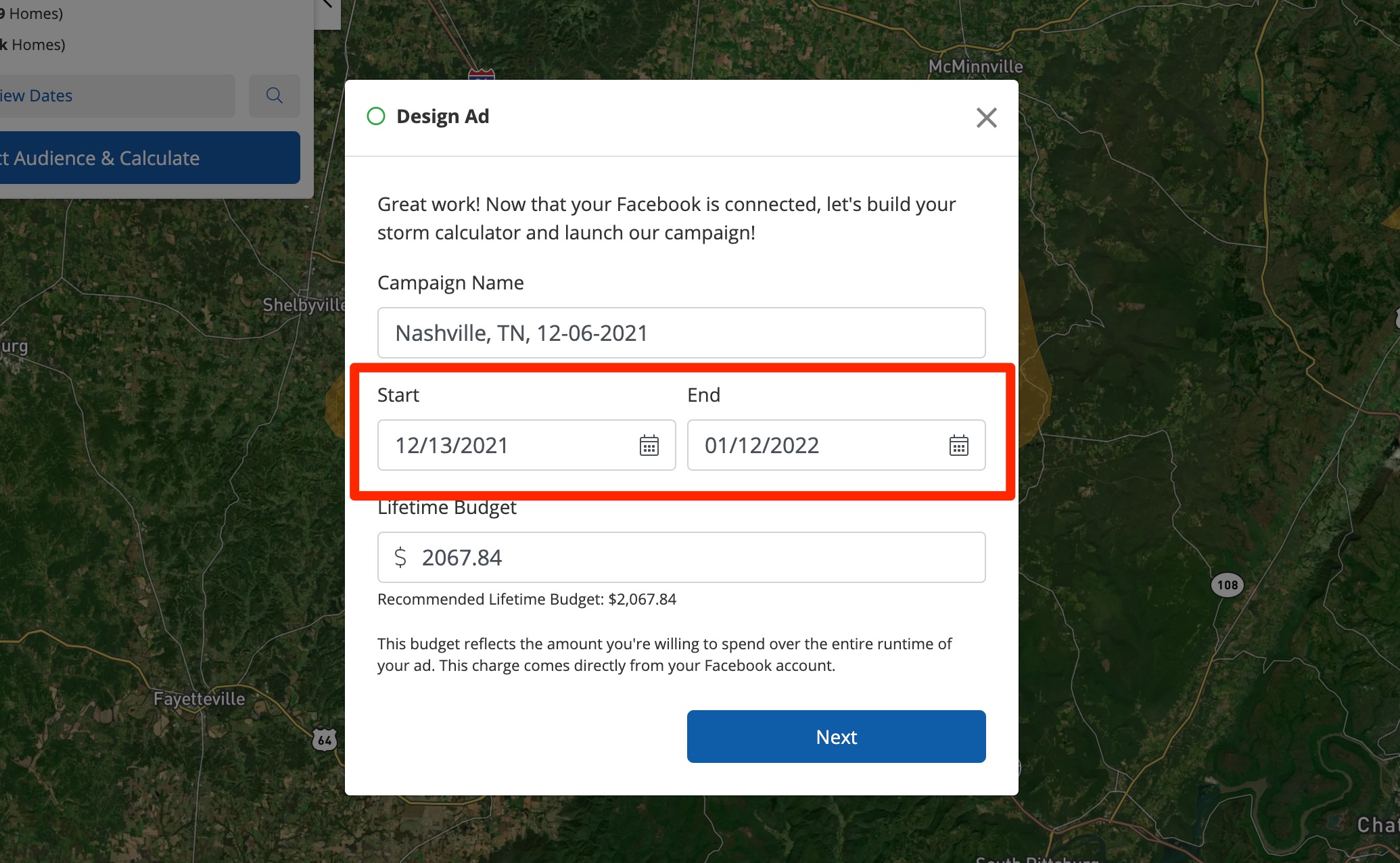
6. Incorporate Appealing Creative
When creating your storm campaign, remember the context in which homeowners will see it: in the middle of their Facebook scrolling. It's essential to use compelling imagery and copy to make the user want to stop!
Start with our AI-generated ad copy and add final touches based on your specific offer.
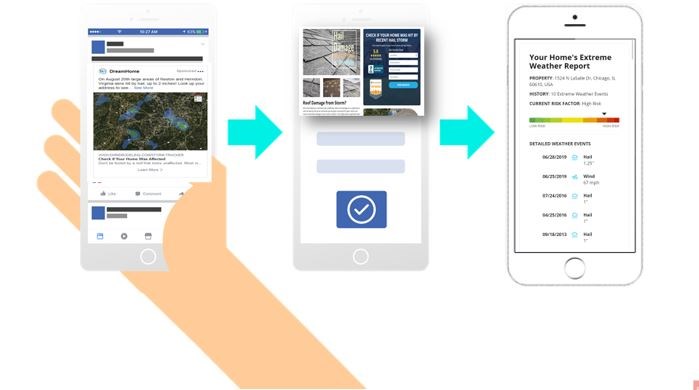
Get more Facebook ad design and copywriting tips in this related article: Creative Best Practices for Storm Campaigns.
More Tips for After You've Launched Your Storm Campaign
Once your storm campaign has been created and launched, we have even more best practices for you! Learn how to view leads from storm campaigns and then check out our resource on handling storm campaign leads to get tips on:
- Responding Quickly to Leads
- Using the Com Portal
- Calculating Predictive Insights
- Following a Call Script
